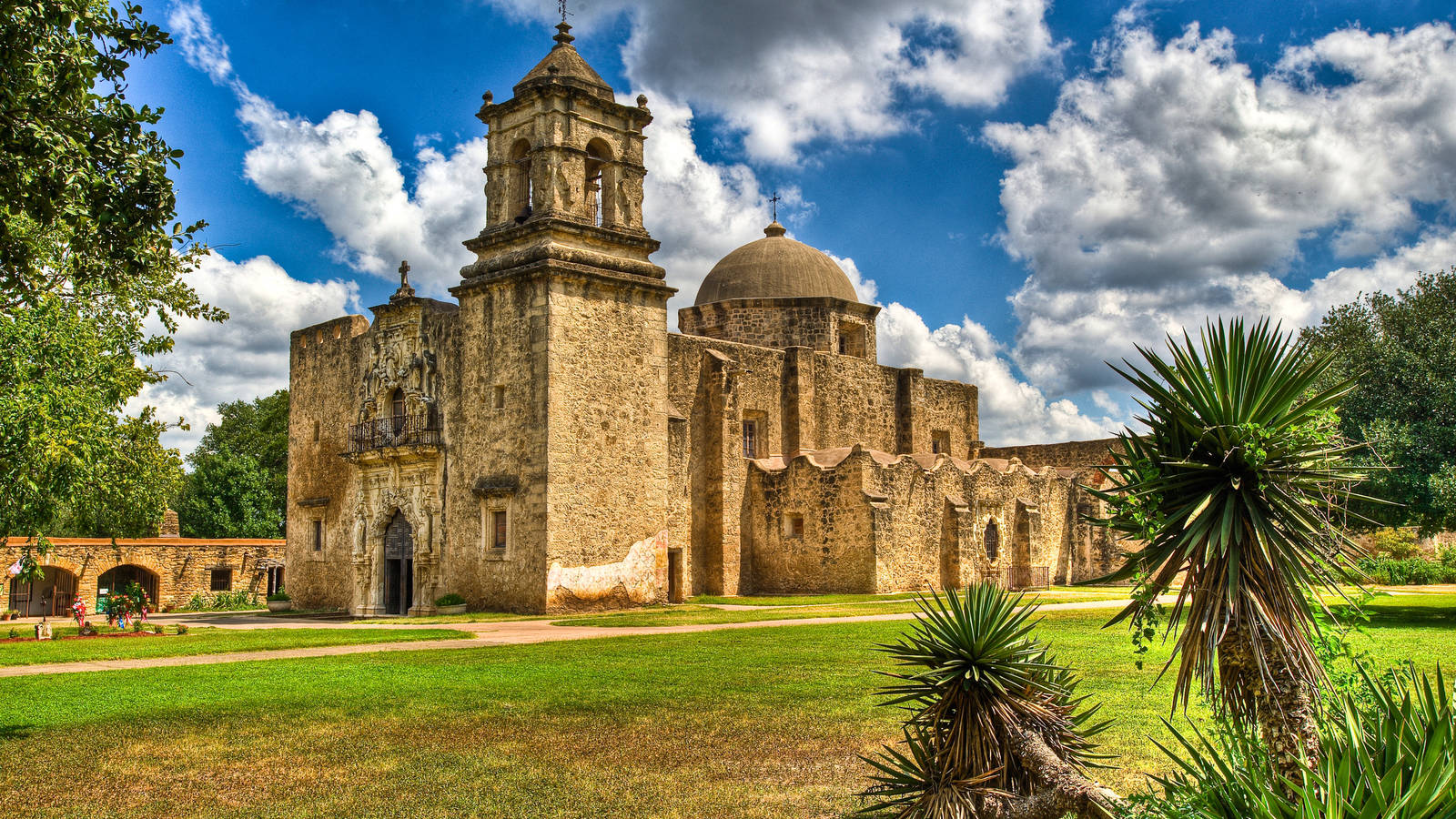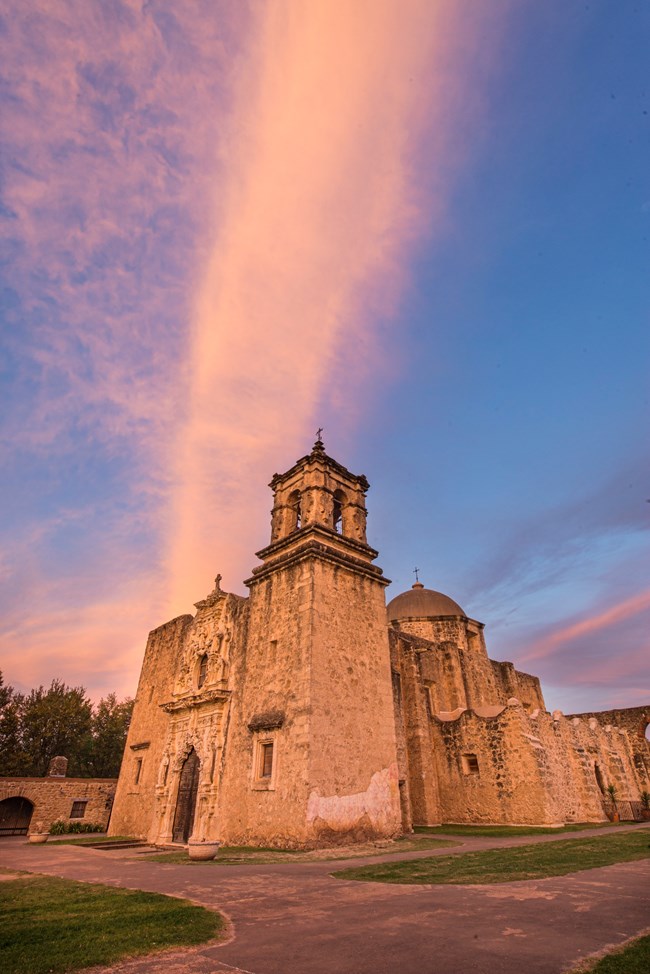Amazing San Antonio Missions National Historical Park Events: Do Not Miss Out
Amazing San Antonio Missions National Historical Park Events: Do Not Miss Out
Blog Article
Check Out the Rich History of San Antonio Missions National Historical Park: a Comprehensive Overview to Its Cultural Value and Preservation Efforts
San Antonio Missions National Historical Park stands as a testament to a lost period, encapsulating a rich tapestry of history and social significance. As we embark on a journey with the historic background of these goals, we discover architectural wonders that have actually endured the examination of time. Nevertheless, beyond the simple physical frameworks, each objective, especially Goal Espada, brings an extensive social weight that resonates deeply with those that discover its premises. Additional diving into the conservation initiatives and difficulties dealt with by the park discloses an intricate interplay between background, neighborhood, and preservation engagement. The tale of San Antonio Missions National Historical Park is not merely about the past; it is a living story that proceeds to unfold, welcoming us to ponder its long-lasting tradition and the ongoing initiatives to guard its heritage.
Historical History of San Antonio Missions
The roots of the historic history of the San Antonio Missions run deep, linking Spanish colonial influence with native societies in the South Texas area. Developed in the very early 18th century, these missions were founded by Franciscan friars with the function of spreading Christianity and converting the local native populations. San Antonio Missions National Historical Park hours. The Spanish Crown sustained these goals as a way of strengthening control over the region and increasing their influence in the New World
The Spanish missionaries played a significant duty fit the social landscape of the region, introducing brand-new farming methods, architecture, and religious practices. The aboriginal neighborhoods, such as the Coahuiltecans and other tribes, interacted with the Spanish settlers, causing a mixing of beliefs and traditions.
Over time, the missions came to be not just religious centers yet additionally economic and social centers, drawing in settlers from numerous backgrounds. Today, the San Antonio Objectives stand as a testimony to this complex history, mirroring the enduring heritage of Spanish manifest destiny and the strength of aboriginal societies in South Texas.
Building Marvels of the Objectives
Having laid the structure of social exchange between Spanish missionaries and aboriginal neighborhoods, the building marvels of the San Antonio Missions exemplify a mix of Native and european craftsmanship that continues to captivate site visitors. These goals, consisting of Goal San Jose, Goal Concepcion, Objective San Juan, Mission Espada, and the Alamo, display distinct functions such as ornate facades, intricate makings, colorful frescoes, and strong stone wall surfaces. The Spanish Colonial style, characterized by curved entrances, bell towers, and spacious courtyards, mirrors a harmonious combination of Spanish design aspects with native structure methods.
Each objective within the San Antonio Missions National Historic Park tells an one-of-a-kind story via its style, illustrating the evolution of building styles and social impacts over time. Site visitors can marvel at the knowledgeable craftsmanship obvious in the detailed stonework, hand-carved wood doors, and religious iconography adorning the insides. These building work of arts stand as long-lasting testaments to the enduring heritage of the missions and the social heritage they stand for.
Cultural Significance of Goal Espada
With its historical origins deeply linked with the indigenous cultures of the area, Mission Espada stands as a symbol of social durability and adjustment within the San Antonio Missions National Historical Park. Established in 1690, Objective Espada was established by Spanish Franciscans as a way to spread out Christianity amongst the Coahuiltecan individuals while additionally acting as a center for agriculture and industry. The mission's cultural relevance hinges on its function as a meeting factor in between Native and european American practices, resulting in a special mix of architectural styles, religious techniques, and agricultural strategies.
Mission Espada's renowned aqueduct, called "Acequia de Espada," is a testament to the design abilities of both Indigenous and spanish peoples, showcasing their partnership in constructing essential rivers for watering functions. This unified blend of cultural influences is more exhibited in the objective's intricate carvings, vivid frescoes, and religious ceremonies that remain to be practiced to this particular day. As one of the earliest unrestored stone churches in America, Objective Espada stands as a living testimony to the enduring tradition of cultural exchange and adaptation that defines the San Antonio Missions National Historical Park.
Preservation Efforts and Challenges
Preservation in keeping the historic honesty of Objective Espada experiences a myriad of complex challenges that demand cutting-edge remedies and dedicated stewardship. As one of the 5 goals within the San Antonio Missions National Historic Park, Goal Espada encounters preservation concerns originating from ecological elements, metropolitan advancement, and the ongoing battle versus natural wear and tear. The delicate equilibrium between saving the original frameworks and making certain visitor accessibility and security calls for precise planning and implementation.
Efforts to maintain Goal Espada involve a multi-faceted approach that includes regular maintenance, structural analyses, and conservation jobs. Collaborations in between park officials, historians, excavators, and regional communities are vital in developing sustainable preservation strategies. Obstacles such as funding constraints, minimal resources, and the demand for specific proficiency further make complex conservation initiatives.
Despite these challenges, the commitment to securing Mission Espada's historical relevance remains steadfast. With continued research study, area involvement, and adaptive conservation practices, the conservation of Mission Espada stands as a testimony to the dedication in the direction of shielding our cultural heritage for i loved this future generations.
Area Involvement in Park Conservation

One of the main means the park includes the neighborhood is via volunteer possibilities. Neighborhood homeowners can take part in preservation tasks, curricula, and special occasions, permitting them to add directly to the preservation of the park. This hands-on involvement not just benefits the park in terms of extra sources and manpower yet additionally produces a more powerful connection between the park and the area itself.
Furthermore, the park consistently looks for input from neighborhood stakeholders, consisting of area groups, companies, and federal government firms, to make certain that conservation efforts align with the needs and worths of the bordering community. By engaging with the regional population in these meaningful means, San Antonio Missions National Historical Park promotes a culture of preservation and sustainability that will assist preserve this cultural treasure for future generations.
Verdict

Beyond the simple physical structures, each objective, notably Mission Espada, carries an extensive cultural weight that resonates deeply with those that discover its grounds. These missions, consisting of Goal San Jose, Objective Concepcion, Mission San Juan, Objective Espada, and the Alamo, display distinctive features such as ornate facades, intricate makings, vibrant frescoes, and durable rock wall surfaces.With its historic roots deeply intertwined with the aboriginal societies of the region, Objective Espada stands as a symbol of social strength and adaptation within the San Antonio Missions National Historic Park (San Antonio Missions National Historical Park). As one of the earliest unrestored stone churches in America, Mission Espada stands as a living testimony to the long-lasting legacy of social exchange and adaptation that defines the San Antonio Missions National Historical Park

Please visit one of our local supporters- Brownstone Law Top Appeals Lawyers In San Antonio Texas
Report this page